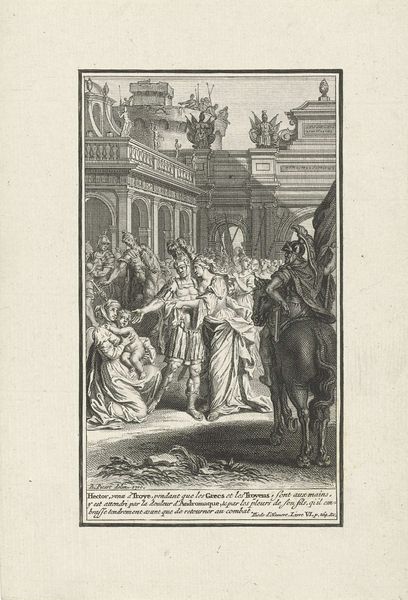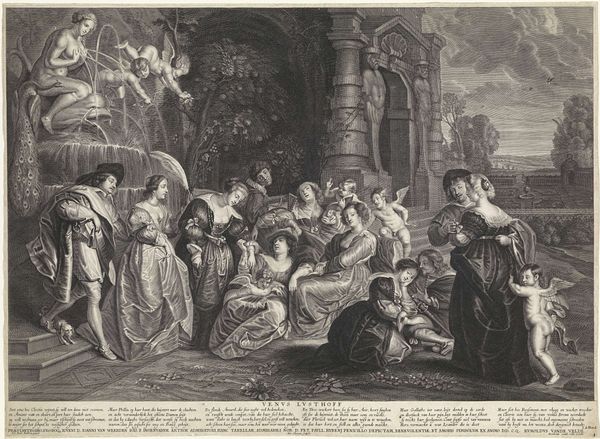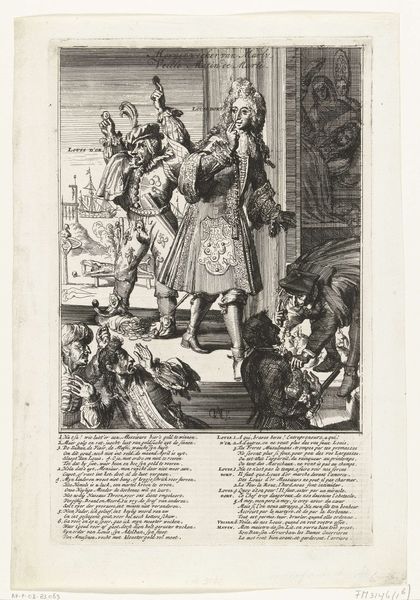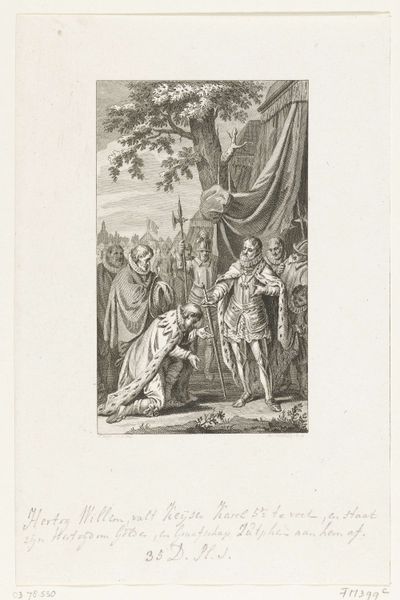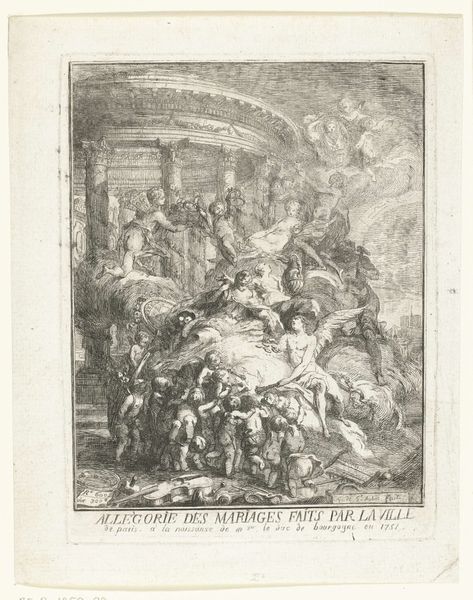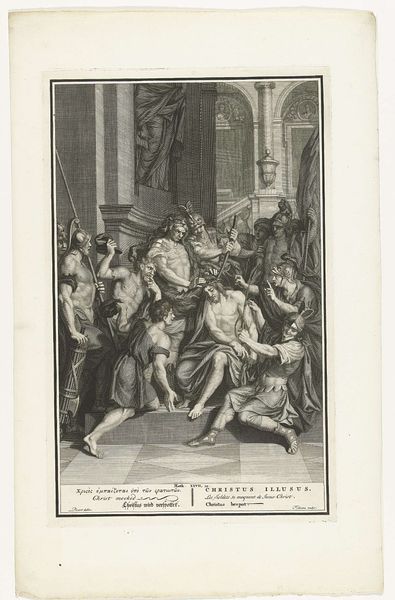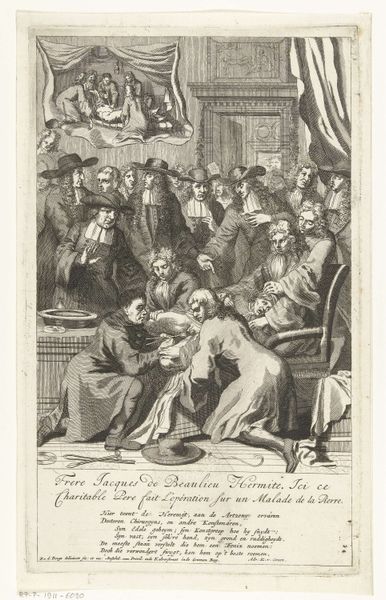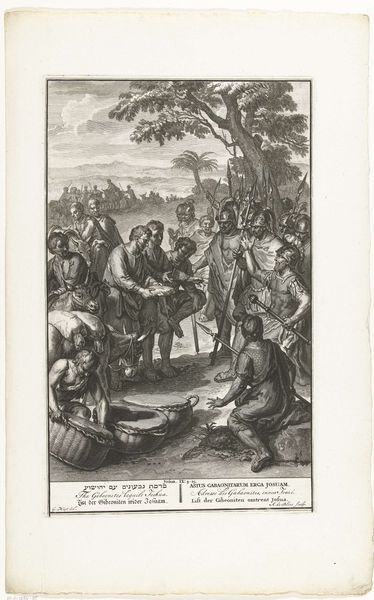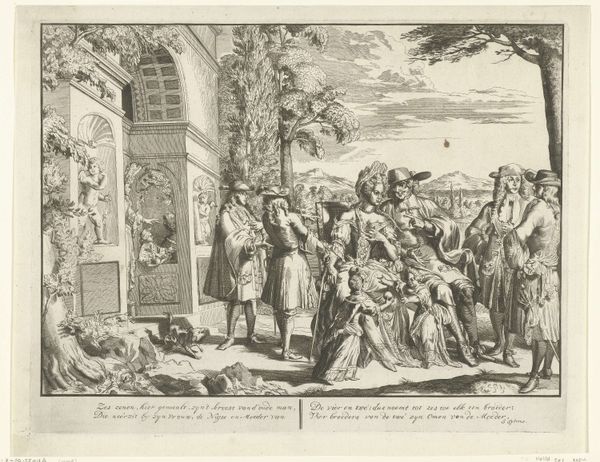
print, engraving
#
narrative-art
#
baroque
# print
#
old engraving style
#
figuration
#
personal sketchbook
#
line
#
history-painting
#
engraving
Dimensions: height 369 mm, width 230 mm
Copyright: Rijks Museum: Open Domain
Editor: This engraving, “Opwekking van de zoon van de weduwe van Naïn” by François van Bleyswijck, dating from 1681 to 1728, is incredibly detailed! The sheer number of figures is striking. What do you see when you look at it? Curator: As a materialist, I'm drawn to the process of its making. This wasn't painting with easily accessible, mass-produced pigments. Look at the precision! The engraving process involved laborious tooling of a metal plate. Each line a conscious decision involving skilled craft and physical effort. Editor: Absolutely, the control needed is mind-boggling. Did the means of its production influence who its audience would be? Curator: Undoubtably. Consider the economics. Who had access to prints like this? Not the peasantry. This detailed biblical scene, rendered through a demanding process, speaks to a particular class— educated, with disposable income. Think about how these prints circulated – commodities within a social and economic network. Were these primarily devotional objects, or something more complex? Editor: I hadn’t considered its consumption in that way. Curator: Think, too, about the role of printmaking at this time. It wasn't just about aesthetics or religious piety. It was also about information dissemination. Did these engravings, mass-produced even if for a select audience, challenge the authority of the Church by making religious narratives more accessible? How does the relatively democratic process of making and distributing prints shift access to imagery and meaning? Editor: So the act of creation and distribution becomes a subtle commentary in itself? Curator: Precisely! The medium *is* the message, in a sense. We are seeing artistry that transcends its narrative to expose the means of production, class, labor, and accessibility to devotional interpretation. Editor: Wow, I never thought about approaching it like that. Thanks for expanding my perspective!
Comments
No comments
Be the first to comment and join the conversation on the ultimate creative platform.
